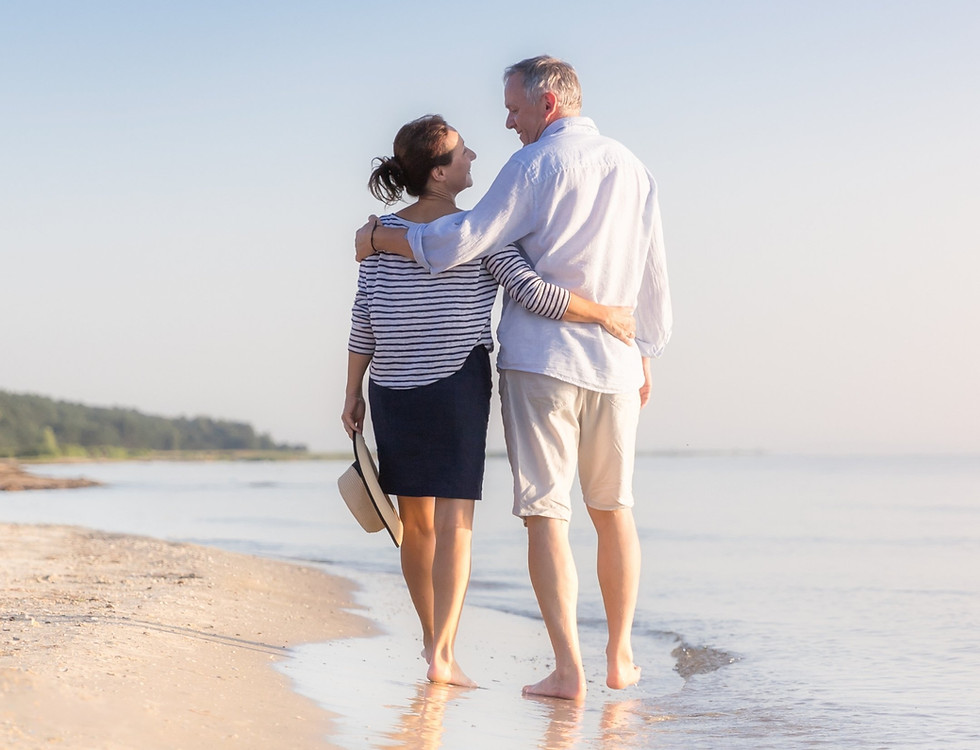Can Poor Leg Circulation be the Hidden Cause of Your Knee Pain?
- Jeffrey H. Miller, M.D.

- Mar 18
- 3 min read
Updated: Aug 12
When we think of knee pain, the usual culprits come to mind—arthritis, injuries, or even just aging. But did you know that poor blood circulation in your legs might also play a role?
New research suggests that chronic venous disease (CVD), also known as venous insufficiency, could be linked to knee osteoarthritis (KOA) and increased knee pain.

Jump to a Certain Section
What is Chronic Venous Disease (CVD)?
CVD occurs when the veins in your legs struggle to send blood back to your heart. This can cause swelling, leg heaviness, and varicose veins.
Many people ignore these symptoms, chalking them up to tired legs or aging. However, CVD is more than just a cosmetic issue—it can affect joint health, too.
The Link Between CVD and Knee Pain
A recent study published in the European Review for Medical and Pharmacological Sciences examined over 200 elderly patients and found that those with knee osteoarthritis were significantly more likely to have CVD compared to those without knee problems. Specifically:
73.65% of patients with KOA also had CVD, compared to only 58.18% in those without knee issues.
Even after adjusting for age, weight, and other factors, this association remained significant.
Patients with both conditions reported higher pain levels and more difficulty moving around.
This means that if you're dealing with persistent knee pain, your circulation might be contributing to the problem.
Why Does Poor Circulation Affect Knee Pain?
The connection between CVD and knee osteoarthritis isn't fully understood yet, but researchers have a few theories:
Inflammation: Poor circulation can lead to swelling and inflammation in the lower limbs, which may worsen joint pain.
Venous Stasis: When blood pools in the veins instead of flowing properly, it may impact the surrounding tissues, including the knee joint.
Shared Risk Factors: Conditions like obesity, aging, and a sedentary lifestyle contribute to both CVD and KOA, making them more likely to appear together.
What You Can Do
If you have knee pain and symptoms of poor circulation—such as swelling, leg heaviness, or varicose veins—it may be worth discussing with your doctor.
Here are some steps that might help:
Move More: Regular exercise improves circulation and strengthens the muscles supporting your knees.
Compression Therapy: Wearing compression stockings can help blood flow and reduce swelling.
Weight Management: Maintaining a healthy weight reduces stress on your knees and improves circulation.
Medical Evaluation: A vascular specialist can check for underlying vein issues that may be contributing to your pain.
Final Thoughts
While more research is needed to fully understand the relationship between venous disease and knee pain, these studies suggest that improving leg circulation may help manage knee osteoarthritis symptoms.
If you’ve been struggling with chronic knee pain, it might be time to look beyond the joints and consider what’s happening in your veins.
Reference
Cao, T-N., Nguyen, C-T., & Nguyen, M-D. (2023). The association between chronic venous disease and knee osteoarthritis. European Review for Medical and Pharmacological Sciences, 27(7), 2899-2907. https://pubmed.ncbi.nlm.nih.gov/37070890/
Stop Letting Your Legs Hold You Back
If you have restlessness, heaviness, aching, swelling, throbbing, or itchiness in your legs—or you notice varicose veins or spider veins—it's time to see a vein specialist.
Explore More of the Miller Vein Blog
Explore expert insights on vein health, treatment options, and wellness tips. Stay informed, and take the next step toward happier, healthier legs!
Prefer Learning on YouTube?
Enjoy easily digestible video content that expands your understanding of vein conditions and their treatments.

